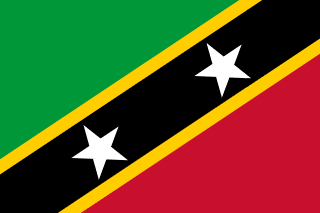Saint Kitts and Nevis - Introduction
Saint Kitts and Nevis (officially: Federation of Saint Christopher and Nevis) is a country in Americas, precisely in Caribbean, with a population of about N/A inhabitants today (2025-04-02). The capital city of Federation of Saint Christopher and Nevis is Basseterre, and the official country TLD code is .kn. Saint Kitts and Nevis has cca2, cca3, cioc, ccn3 codes as KN, KNA, SKN, 659 respectively. Check some other vital information below.

Saint Kitts and Nevis , Coat of Arms
Names
| Common | Saint Kitts and Nevis |
|---|---|
| Official | Federation of Saint Christopher and Nevis |
| Common (Native) | Saint Kitts and Nevis |
| Official (Native) | Federation of Saint Christopher and Nevis |
| Alternative spellings | KN, Federation of Saint Christopher and Nevis |
| Translations ⬇️ | |
Languages
| eng | English |
|---|
Geography

Saint Kitts and Nevis is located in Caribbean and has a total land area of 261 km². It is bounded by and the capital city is Basseterre
| Region/Continent | North America |
|---|---|
| Subregion | Caribbean |
| TimeZone | UTC-04:00 |
| Capital city | Basseterre |
| Area | 261 km² |
| Population 2025-04-02 | N/A |
| Bordered Countreies | |
| Demonym | |
| eng | Male: Kittitian or Nevisian / Female: Kittitian or Nevisian |
| fra | Male: Kittitien-et-nevicien / Female: Kittitienne-et-nevicienne |
| Lat/Lng | 17.33333333, -62.75 |
Historical data and more

The National Flag of Saint Kitts and Nevis
The flag of Saint Kitts and Nevis features two large five-pointed white stars within a yellow-edged black diagonal band that extends from the lower hoist-side corner to the upper fly-side corner of the field. Above and beneath this band are a green and red triangle respectively.
| Currency | |
|---|---|
| Name | Eastern Caribbean dollar |
| Code | XCD |
| Symbol | $ |
| Other info | |
| Idependent | yes, officially-assigned |
| UN Member country | yes |
| Start of Week | monday |
| Car Side | left |
| Codes | |
| ISO 3166-1 alpha-2 | KN |
| ISO 3166-1 alpha-3 | KNA |
| ISO 3166-1 numeric | 659 |
| International calling code | +1869 |
| FIFA 3 Letter Code | SKN |
All Important Facts about Saint Kitts and Nevis
Want to know more about Saint Kitts and Nevis? Check all different factbooks for Saint Kitts and Nevis below.

